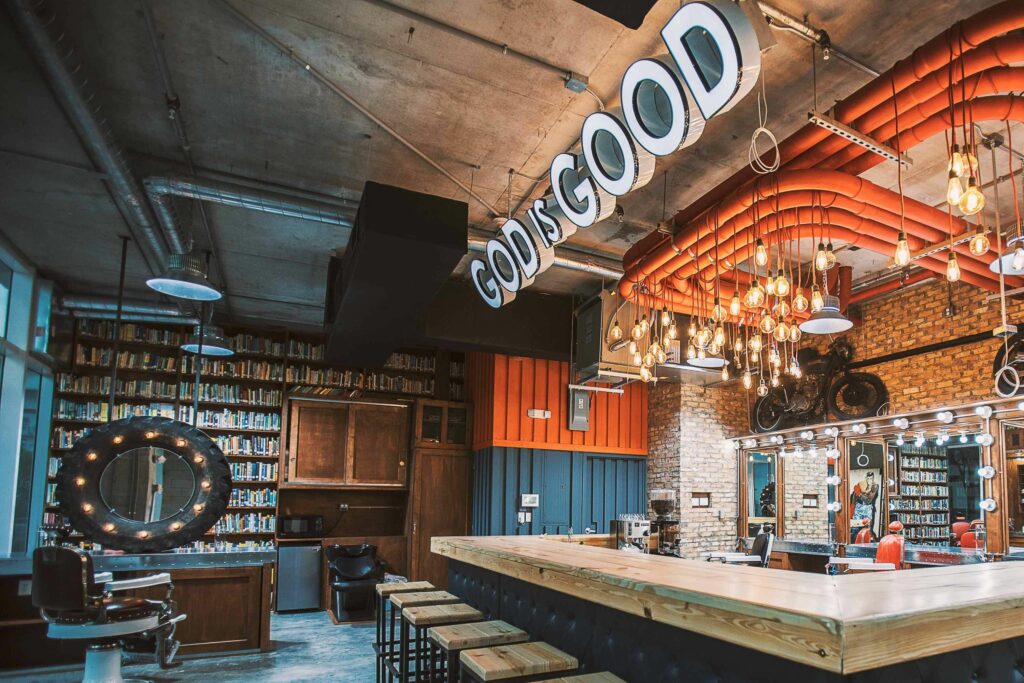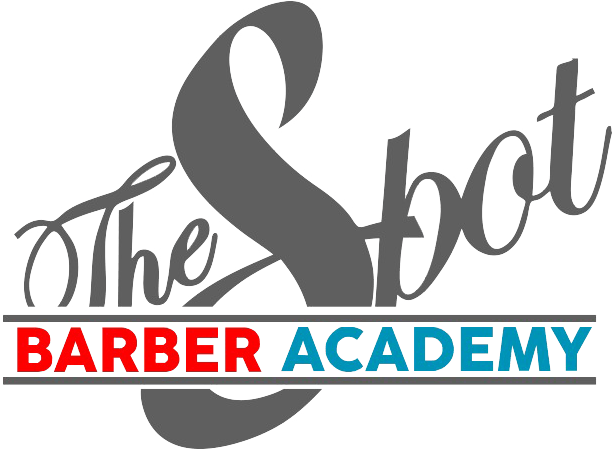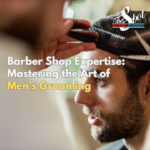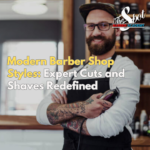Techniques and Skills Behind the Scissors
Barbering, an age-old profession steeped in tradition and artistry, has undergone a remarkable transformation over the centuries. Once seen as a mere necessity, it has evolved into an art form, a medium through which personal style and expression are not just conveyed but celebrated. In this detailed exploration, we’ll delve into the heart of barbering, unraveling the Techniques and Skills Behind the Scissors that make this craft so unique and revered.
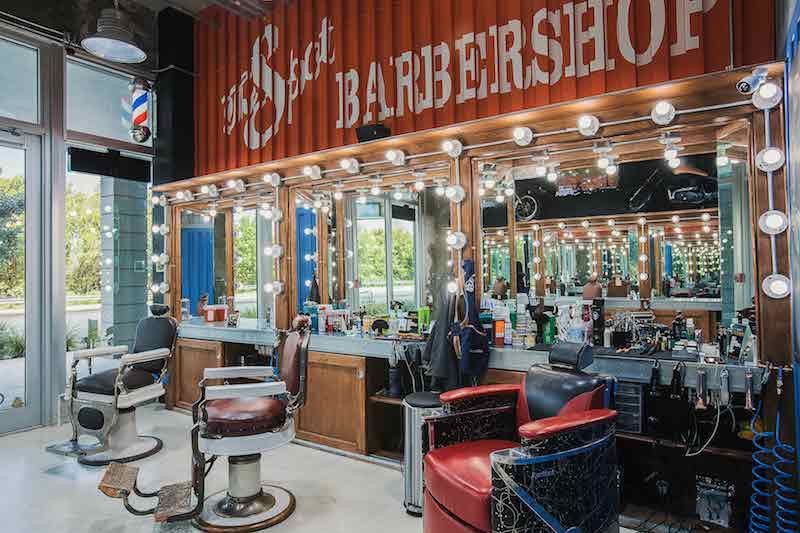
Building a Career in Barbering
Developing Technical Expertise and Creativity
- Continuous Learning: The best barbers never stop learning. This could mean attending workshops, participating in trade shows, or even learning from online tutorials. Staying up-to-date with the latest trends and techniques is crucial.
- Experimentation: Developing a unique style is key to standing out in the barbering industry. This involves experimenting with different techniques, tools, and styles to find what works best and showcases your creativity.
- Specialization: Some barbers choose to specialize in certain areas like traditional shaves, beard styling, or specific hair types. Specialization can set you apart and make you the go-to expert in that niche.
Building a Personal Brand
- Professional Portfolio: A portfolio showcasing your best work is essential. This could be a physical book or, more commonly now, a digital portfolio on platforms like Instagram or a personal website.
- Networking: Building relationships within the industry can open doors to new opportunities. This includes connecting with other barbers, hair product companies, and participating in community events.
- Client Relationships: Building a loyal clientele is the backbone of a successful barbering career. This means providing excellent service, remembering personal details about your clients, and creating a welcoming atmosphere.
Understanding the Business of Barbering
- Financial Management: Understanding the financial aspects, like budgeting, pricing your services correctly, and managing expenses, is crucial for sustainability.
- Marketing Strategies: Effective marketing can significantly boost your career. This includes leveraging social media, local advertising, and word-of-mouth referrals.
- Entrepreneurship: Many barbers aspire to own their shops. This requires additional skills in business management, including understanding regulatory requirements, hiring staff, and creating a business plan.
Techniques and Skills Behind the Scissors: The Foundation of Barbering
- Sectioning and Parting: This is the first step in any haircut. Proper sectioning and parting ensure a balanced and symmetrical haircut. It involves dividing the hair into manageable sections to maintain control during cutting.
- Clipper Work: Mastery of clipper work is essential for most men’s haircuts. This includes understanding different guard sizes, the angle of the clipper, and the pressure applied. Techniques like fading, tapering, and blending are foundational skills in modern barbering.
- Scissor Over Comb: A technique that requires a steady hand and a keen eye for detail. It involves using the comb to lift the hair to the desired length and then cutting it with scissors. This method is crucial for creating soft, natural lines and blending.
- Razor Techniques: Razor cutting and shaving are skills that distinguish a barber from a hairstylist. Whether it’s shaping a beard or executing a clean shave, the razor must be handled with precision and care to avoid nicks and ensure a smooth finish.
- Styling: The final touch in any haircut is styling. This involves understanding how to use different products like pomades, gels, and waxes to achieve the desired look. It’s not just about cutting hair; it’s about crafting a style that complements the client’s features and preferences.
Understanding the Basic Tools
Every craftsperson knows that the quality of their work is as good as their tools. For barbers, this means having a well-curated set of equipment. The most essential tools in a barber’s arsenal include scissors, clippers, razors, combs, and brushes. Each tool has its purpose and requires a unique skill set to be used effectively.
Scissors are used for precision cutting and styling. The choice between using a straight or thinning scissor depends on the desired finish. Clippers, on the other hand, are essential for working on shorter hair, offering efficiency and uniformity in cuts. The razor, a tool that dates back to the origins of barbering, is vital for achieving close shaves and clean lines.
Advanced Techniques and Skills Behind the Scissors and Trends
Advanced Techniques and Skills Behind the Scissors Cutting Techniques
- Undercut and Disconnected Styles: These styles involve creating a sharp contrast between very short sides and a longer top. The key is in the seamless transition that requires precise clipper and scissor work.
- Texturizing for Volume and Movement: Texturizing is an advanced technique used to add volume and movement to the hair. It involves selectively thinning out sections of hair to create a more dynamic, layered look. This technique is particularly popular in creating modern, edgy hairstyles.
- Precision Fading: Fading is a technique where the hair is tapered so finely that it seems to “fade” into the skin. Mastering this technique requires a deep understanding of hair types and growth patterns, as well as a steady hand to create smooth, seamless gradients.
- Razor Art and Designs: This involves using a razor to create intricate designs or patterns on the scalp. It’s a form of artistic expression that requires a high level of skill and creativity, turning haircuts into works of art.
Trends Shaping the Barbering Industry
- Sustainability in Grooming Products: There’s a growing trend towards using eco-friendly and sustainable grooming products. This includes products made with natural ingredients and sustainable packaging. Barbers are increasingly incorporating these products into their services, responding to the rising consumer awareness about environmental impact.
- Personalized Haircut Experiences: Customization is key in modern barbering. Clients are looking for more than just a haircut; they want a personalized experience. This includes consultations that take into account their lifestyle, hair type, and personal style.
- Gender-Neutral Barbering: The traditional gender boundaries in barbering are blurring. There’s a trend towards creating inclusive spaces that cater to all genders, challenging the conventional norms of barbering being a male-only domain.
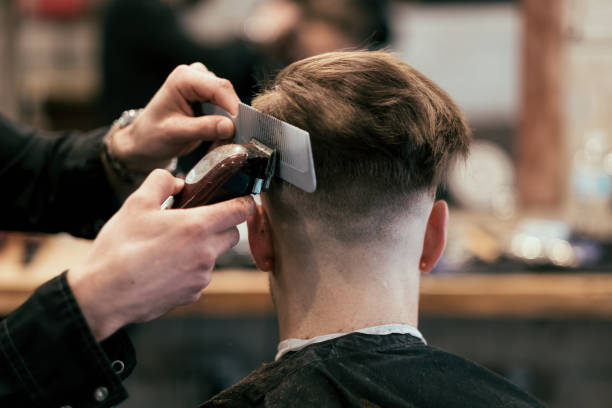
The Historical Context of Barbering
Ancient Beginnings
The earliest records of barbering date back to the ancient civilizations of Egypt, Greece, and Rome. In Egypt, barbers were highly respected individuals who not only groomed the living but also prepared the deceased for the afterlife. Egyptian barbers worked with rudimentary tools, like sharpened flints and oyster shells, to perform haircuts and shaves, often as a symbol of cleanliness and purity.
Medieval and Renaissance Eras
During the Middle Ages, the role of the barber expanded significantly. Barbers in medieval Europe were known as ‘barber-surgeons,’ performing a wide range of services including tooth extraction, bloodletting, and even minor surgeries. This period saw the barber’s role intertwine with medicine, a practice that continued until the development of modern medical practices.
18th and 19th Centuries
In the 18th and 19th centuries, the distinction between barbers and surgeons became more pronounced. The medical profession formalized, leaving the surgical aspects to medically trained professionals. Barbers, in turn, began to focus solely on hair cutting, shaving, and grooming. This period saw the rise of the modern barber shop as a male sanctuary – a place for grooming, social interaction, and relaxation.
Barbering in the Modern World
The 20th century witnessed a surge in the barbering profession’s popularity. It became synonymous with male grooming, offering a space where men could maintain their appearance and enjoy camaraderie. The two World Wars saw barber shops serving as familiar havens for soldiers and civilians alike, maintaining a sense of normalcy and community during tumultuous times.
Conclusion: Join Our Barbering Program at The Spot Barber Academy
In conclusion, the world of barbering is rich and multifaceted, offering a rewarding career for those passionate about the craft. As we’ve seen, the skills and techniques involved go far beyond a simple haircut; they are the means through which barbers express their creativity and connect with their community.
For those inspired by this age-old craft, The Spot Barber Academy is your gateway to a fulfilling career in barbering. Our program is meticulously designed to equip you with the necessary skills, knowledge, and confidence to thrive in this dynamic industry. Join us at The Spot Barber Academy and embark on a journey that is not just about cutting hair, but about shaping lives and styles.
